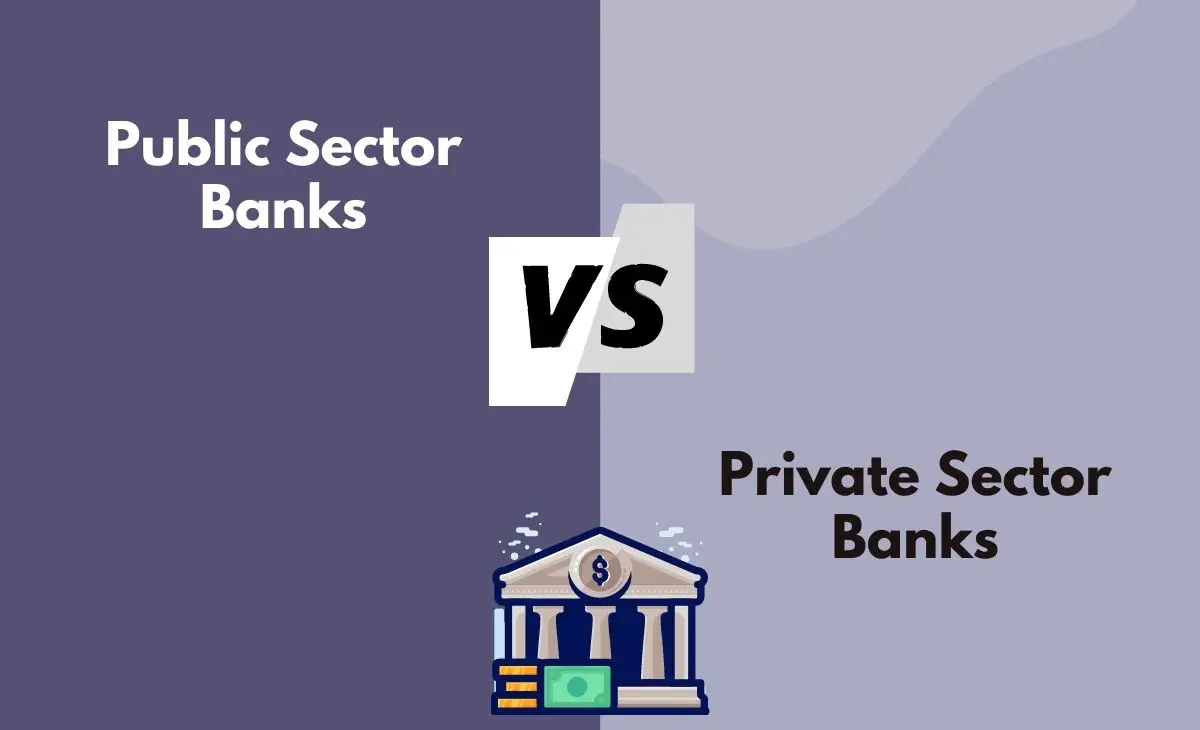What are Public Sector Banks?
Banks classified as public sector are ones in which the Indian government owns the majority of the stock. To be more precise, the Ministry of Finance holds a sizeable stake in public sector banks. Banks adhere to the financial regulations established by the Indian Government as public sector enterprises, or PSUs. Numerous public sector banks, like the majority of financial organizations, also provide home loans. In light of this, you can choose between a private or a public sector bank if you need a home loan from a financial organization. However, be aware that public sector banks' home loan interest rates differ from those of private sector banks. When applying for a house loan, you should be informed of the specific features, advantages, and disadvantages that each of these types of banks have to offer. To learn more about the distinctions between banks in the public and private sectors, keep reading.What are Private Sector Banks?
These are financial institutions wherein private individuals own the maximum stake in equities or shares. The growth of private sector banks has been immense since 1990. On comparing private vs public banks, you can attribute the tremendous growth rate of private banks to using the latest technology. Implementing new monetary tools also helped these banks acquire a considerable customer base.Private sector banks in India can be classified into two types:
- Old private sector banks, which emerged before 1968
- New private sector banks, which formed after the 1990s
Why Choose a Public Sector Bank for a Home Loan?
Some of the reasons why you must consider taking a housing loan from a public sector bank are the following:- Processing fees are much lower compared to a private sector bank.
- If the RBI decreases its repo rate, a public sector bank will immediately reduce the applicable interest rate. On the contrary, a private sector bank may not decrease your interest rate at all.
- In case you want to prepay your loan ahead of time, a public sector bank allows you to do so at no additional charge. However, with a private sector bank, you may have to pay up to 2% of the amount you are prepaying.
- You can prepay your loan anytime during your loan repayment tenure. Private sector banks, on the other hand, will only allow you to do the same after a minimum of six instalments.
- If you want to prepay a home loan you have taken from a public sector bank, you can do so at any given time. On the other hand, a private sector bank may only allow you to prepay up to 25% of your outstanding housing loan balance in a given year.
- A public sector bank generally has a diverse range of home loan schemes; each of them is meant for a specific income group or has a different use. You may not find as much variety if you choose to deal with a private sector bank.
- The home loan eligibility criteria laid out by a public sector bank are generally more lenient than a private sector bank. Hence, you will always stand a better chance of getting a home loan from a public sector bank than a private one.
Why Choose a Private Sector Bank for a Home Loan?
Understanding a few essential features of public sector banks vs private sector banks can help you decide on the right lender for a home loan. While you are familiar with the benefits of availing home loans from public banks, here are the top advantages of choosing a private sector bank for a home loan:- Private sector banks have a lower turnaround time when compared to public banks; hence, you can expect quick home loan approvals
- With private banks adopting digitisation, you can easily manage your loan repayment using the bank’s mobile applications and websites. Though public sector banks try matching the speed of private banks, there is still a gap.
- Availing a home loan from a private sector bank increases convenience as they provide doorstep services. This saves you the time and energy of visiting the branch to get a loan.
- Private sector banks sanction higher loan amounts, and this allows them to better cater to you, the borrower.
- The option of an online application process allows even an NRI to avail a home loan with ease.
Home Loan Interest Rates of Public Banks
Here are the public bank house loan interest rates from some of the leading lending institutions.
Bank |
Interest Rates |
Repayment Tenure |
| Punjab National Bank | 8.50% p.a. onwards | 30 years |
| Union Bank | 8.50% p.a. onwards | 30 years |
| State Bank of India | 9.25% p.a. onwards | 30 years |
| Central Bank of India | 8.80% p.a. onwards | 30 years |
| Indian Overseas Bank | 8.85% p.a. onwards | 30 years |
| UCO Bank | 9.15% p.a. onwards | 30 years |
| Bank of Baroda | 8.50% p.a. onwards | 30 years |
Home Loan Interest Rates of Private Banks
Here is a list of home loan interest rates from private banks.
Bank |
Interest Rates |
Repayment Tenure |
| ICICI Bank | 9.00% p.a. onwards | 30 years |
| YES Bank | 9.15% p.a. onwards | 35 years |
| Axis Bank | 8.75% p.a. onwards | 30 years |
| HDFC Bank | 9.00% p.a. onwards | 30 years |
| South Indian Bank | 9.85% p.a. onwards | 30 years |
| City Union Bank | 10.25% p.a. onwards | 15 years |

Private vs Public Banks for Home Loans
Before deciding whether to take a home loan from a public sector bank or a private one, you must know how one differs from the other. The key distinctions between the two are as follows:
Parameters |
Public Sector Bank |
Private Sector Bank |
| Processing Fees | Lower than their private sector counterparts, as public sector banks do not hire direct selling agents (DSAs). | A private sector bank generally charges a higher processing fee since it hires DSAs to get them leads/businesses. |
| Loan to Value (LTV) Ratio | You can acquire up to 90% of the property value as a housing loan from a public sector bank. | In some cases, you can acquire all of the money you will need to buy a property as a home loan from a private bank. |
| Processing/Turnaround time | Public sector banks will take more time than their counterparts in the private sector to process your home loan application and then disburse it. | Private sector banks will be quicker than their public sector counterparts in processing your loan documents and then crediting the amount to your bank. |
| Provision of doorstep delivery services | Public sector banks do not offer doorstep delivery services. | Private sector banks offer doorstep delivery services to their home loan customers. |
| Interest rates | Public sector banks will charge you a relatively lower interest rate on a housing loan than a private sector lender. | Since private sector banks are more about profitability than the public sector players and get a lot of intermediaries involved, the interest rate they charge you will be higher than that of a public bank. |
| Loan repayment penalty | Public sector banks will not charge you a single extra rupee as a penalty for repaying your loan before your loan repayment tenure ends. | A private sector bank will charge you up to 2% of the home loan amount you want to repay to compensate for the interest losses. |
Conclusion
You can take advantage of advantages like reduced interest rates and no processing costs when you decide to borrow money from a public sector bank. Additionally, if a public sector bank is your house loan provider, you will be able to prepay your debt in full whenever you wish. But getting a home loan from a private sector bank also has some benefits. Therefore, the decision ultimately depends on what you desire from a mortgage lender.FAQs
Q. Amongst private banks vs public sector banks, which financial institution offers a better interest rate on home loans?
On comparing public vs private banking institutions, the home loan interest rate of private banks is higher than that of public banks.
Also Read: Your path to affordable home financing a comprehensive home loan interest rate guide
Q. How long does it take for a home loan to be sanctioned?
The processing time varies between public and private sector banks. While private banks have a higher turnaround time for loan approvals, getting a loan sanctioned in the public sector bank may take longer.
Q. How to check the total interest cost for your home loan?
Home loan applicants can use home loan EMI calculator to calculate the total interest cost of his home loan. They would need three data points – required loan amount, loan tenure and interest rate for using Home Loan EMI calculators.
Q. Which bank has lowest home loan interest rate?
Though interest rates offered by banks can increase or decrease as per the banks’ discretion, right now the Bank of Maharashtra is offering the lowest home loan interest of 8.40% p.a. to its customers. However, note that this rate is applicable only on home loan for women applicants.
Q. How can I check total interest payout for my housing loan?
Use a home loan EMI calculator to check your total interest payout against your loan. Just enter the loan amount, tenure, and interest rate. Upon calculation, you will not only be able to check your EMI, but also a detailed break-up of your repayment schedule through an amortisation table. Through the amortisation table representing your repayment schedule, you can check how much interest you have paid against your loan.










